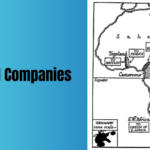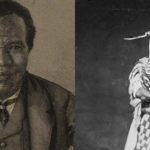The Itsekiri
The Iteskiri are still one of the tribes in the delta area of modern-day Nigeria. However, the history of the Itesekiri can be traced back to the migration of 1473 from Bini society. the Itsekiri Migrated through their leader Iginua. The Itsekiri Migrated from the Bini society because Iginua was denied the king by the kingmakers.
The Itsekiri under the leadership of Iginua found themselves living in the lower delta province of southern Nigeria. As time went on, Ebrohimi was made the capital of Itsekiri and later the capital became Ode-Itsekiri. However, the Itsekiri people still had a strong resemblance in structure to the Bini and the Yoruba people despite their mixed up with the Ijo and Urhobo during their migration.
The Itsekiri as time went on developed several structures that aided them to become a strong tribe in the delta region.
The Itesikiri Political Institution
The Political institution of the Itsekiri was a semi-centralized system of government just like the Yoruba pre-colonial system of government. As the Itsekiri developed, a strong resemblance to the Bini system of political and social organization was evident in their socio-political system. The influence of the Yoruba language and customs on Itsekiri culture is also noticeable. The Itsekiri pre-colonial political structure entails.
- Olu: The Olu is the title of King or Monarch. The Olu was responsible for leading the land as the Monarch. The Olu is also the head of the religious, political, and social groups and makes decisions for his people through the guardians of the council of Ojoye.
- Council of Ojoye: The Council of Ojoye is made up of seventy members. The seventy members are the king’s advisers they meet with the king to make decisions about the kingdom
- Ologbotsere :The Ologbostere is the prime misters of Itsekiri
- Iyasere: The Iyasere is the Itsekiri War Commander
- Uwangue: The Uwangue is the custodian of the king (OLU) regalia and the chief spokesman of the council.
- Olareaja: The Olareaja title means “oldest person” in Itsekiri. the Olareaja makes the decisions in the village according to the rule of the Olu and the rules of the land. This is how the Olu is able to control villages in Itsekiri. However, it’s important to note that the Olareaja title is not given to the oldest individual in the villages but to the oldest person related to the Olu or founder of the villages.
- Okpaaran: the Okpaaran is the name given to the priest whether the village priest who supports the Olareaja in guiding the village or the one the whole Itsekiri visit during hard decisions.
ECONOMY OF THE ITSEKIRI
The economy of the Itesikiri was basically at first based on domestic production. Their economy helped them have a good relationship with their neighbors. In addition to their domestic production of earthenware and canoe production, the people were also involved in fishing, salt making, and agriculture.
The commercial activities and domestic production of the Iteskiri contributed to their wealth and also helped the Itsekiri play an important role in the delta economy. The canoe production played an important role in the movement of the people since they were closer to the coastland and also aided them even during the colonial invasion. The closeness to the coastal area was one of the reasons why they were the first people to have contact with the Europeans (Portuguese) in the area.
The Itesikiri involvement in slaves during the European trade of slavery as a middleman was used by the Itesikiri people to gain access to firearms which they used to protect themselves and also sold to other tribes close to them.
The acceptance of the Europeans into their society also boosted their people’s commercial activities and their prestige. The commercial activities offered by the Europeans gave the Itekiri a hedge over the Bini, Urhobo, and the neighboring people. The contract inspired major development not only by increasing the volume and pace of trade but also by stimulating the growth of more efficient commercial and political methods in the region.
Also
It’s however wrong to believe that the advent of the Europeans brought development to the people. The Itsekiri people were already people with several developments that can be seen in their political institutions before the European advent into their society. For instance, the Itsekiri for several years maintained a monopoly of trade at the Warri rivers and the Ethiope due to their leader Nana’s wealth and strength.
The Itsekiri was also a major export exporter of palm oil around 1852 when regular steamships started and the Bonny export center couldn’t contain the increase of European traders coming into the area. The Itsekiri seized the opportunity and this helped them to the extent that it led to rivalry between the Bini and the Itsekiri. The location of the Iteskiri also helped them become valuable middlemen between the coastal cities and the hinterlands.
The economic growth of the tribe can be attributed to the tremendous leadership of the Olu, their geographical location, and their commercial activities.
Religion
The Itesikiri were pure traditionalists who believed strongly in the African gods. the belief in gods led to the establishment of the Okpaaran in society. the gods were consulted during serious decision-making and land disputes. The commercial contact the people of Itsekiri had with the Portuguese led to the introduction of Christianity in the area.
However, the Portuguese tried to Christianize the people but the people and their Olu had little interest in the religion. It also believed that the lack of funds also contributed to the Portuguese failure in the area.
Modern Itsekiri
The Itsekiris Currently numbering 2.7 million are primarily found in the local government areas of Warri South, Warri North, and Warri South West in Delta State, which is located on Nigeria’s Atlantic coast.
Their modern language and culture have successfully blended the various civilizations that have affected its growth. They are now most closely linked to the Ijebu, Akure, Ikale, Ilaje, Ondo, and Owo subgroups of South-Eastern and South-South Yorubaland, as well as Edo, Urhobo, Ijaw, Anglo-Scottish, and Portuguese.
The Itsekiri monarchy is still in place today, and Ogiame Olu Atuwatse III is the current head of state. The historical capital of the Itsekiri is Ode-Itsekiri (also called “big Warri” or “Ale Iwerre”).
The Itsekiri have never been involved in any conflict since the British took over in 1900 and the independence of Nigeria until the Warri crises. The Warri crisis was a clash that happened between the Itsekiri and Ijaw in 1999 from May to July.



